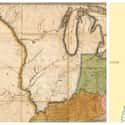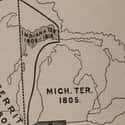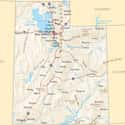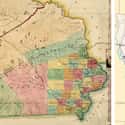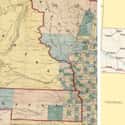-
(#1) Louisiana
- 1812-04-30
When the US bought territory from France in 1803 for $15 million in the transaction known as the Louisiana Purchase, the territory was much larger than the current state of Louisiana, spanning an area that now comprises at least portions of 15 states. At the time, negotiators weren't even sure what the exact boundaries of the purchase were, especially which parts of the Louisiana Territory belonged to Spain. So the US settled on ambiguous language that was as clear as mud, agreeing to buy "the Colony or Province of Louisiana with the same extent it now has in the hands of Spain and that it had when France possessed it."
In 1804, the US divided its new lands into two territories; the northern portion was the Mississippi Territory, and the southern part, the Orleans Territory. The US sparred with Spain over the southern boundary of the Louisiana Purchase, saying it included land west of the Mississippi to the Sabine River. Spain, however, claimed lands west of the Mississippi to the Red River (which is east of the Sabine). Then, in 1810, the US seized from Spain the western portion of the Florida panhandle, which until then went all the way to the Mississippi.
When Congress approved a measure to allow the Orleans Territory to become a state in 1812, the boundaries were favorable to the US.
-
(#2) California
- 1850-09-09
A map of Texas, Oregon, and California by Samuel Augustus Mitchell, published right before the conflict between the United States and Mexico (1846 to 1848), refers to "Upper or New California," comprising the California of today along with "Old California" (now Baja California), and "the unexplored Region enclosed on the [west] by the Sierra Nevada and in the [east] by the Bear [River] and [Wasatch Mountains] ... called the Great Interior Basin of California." The Wasatch Mountains are in present-day Utah, so before California became a state, it covered a great deal more territory.
After the conflict with Mexico ended in 1848, the US acquired land that now includes present-day California, Nevada, Utah, Arizona, and parts of Wyoming, Colorado, and New Mexico. Although by then Congress was following a principle established by Thomas Jefferson that all states should be equal in size, California was huge in comparison to other states at the time.
Why did Congress create California as such a big state? According to Mark Stein in his book How the States Got Their Shapes, "It didn't: California created itself," or at least created its own boundaries. In 1849, just one year after the US acquired California from Mexico, gold was discovered, and people rushed to the area around the San Francisco Bay in search of their own fortune. When coming up with proposed borders, California wanted to keep all of the Sierra Nevada mountain range (where the gold was), and although Congress wasn't thrilled with that, members worried California would become its own nation, so they acquiesced. California also wanted to include all of what is now Southern California, even though the region was an arid desert, because San Diego's harbor farther south was a valuable resource.
According to Stein, "The United States needed California more than California needed the United States."
-
(#3) Texas
- 1845-12-29
The borders of Texas (and those of many other states) were influenced in part by a much smaller state: Missouri. In 1819, when Missouri petitioned Congress to become a state, enslaved people were allowed there. At the time, the country had 11 free states and 11 slave states, so the US Senate was "balanced." Adding Missouri, however, would give non-free states an advantage, so Congressman Henry Clay developed the Missouri Compromise, which would admit Missouri as a slave state and Maine as a new free state.
But the US still had plenty of land on the future-state track. So according to the Missouri Compromise, enslaved people would not be allowed north of Missouri’s southern border (except in Missouri), at 36 degrees 30 minutes north latitude, in any new states created as part of the Louisiana Purchase. That included Texas, which achieved independence from Mexico in 1836, and then became a state in 1845. According to Mark Stein in his book How the States Got Their Shapes, to stay a slave state, Texas had to lop off a portion of its territory at about the 36th parallel, just south of Kansas’ border, but in line with Missouri’s southern border, so it lost the long skinny portion on the northwest in present-day Colorado and Wyoming. (This also explains Oklahoma’s panhandle.)
Texas got its right-angled western border with New Mexico as part of the Compromise of 1850. As a way to relieve debt, Texas sold some of its land to the US for $10 million, creating a new northwestern border.
-
(#4) North Carolina
- 1789-11-21
A chain of errors by surveyors was responsible for the jagged border between North and South Carolina. In 1712, while still a colony, Carolina was divided into two parts. Charles Town (now Charleston, South Carolina), had been the seat of government for the colony, but when political factions formed there due to religious differences, England appointed a new governor in North Carolina.
The Carolina halves officially became separate royal colonies in 1719, which led to disputes over the border between them. A joint boundary commission decided the border should start south of the Cape Fear River northwest to the 35th parallel, then due west in a straight line, but errors by surveyors - their equipment was much less accurate then - and attempts to fix those errors, led to an almost comical series of mistakes.
At the time, North Carolina and other colonies also had boundaries they claimed stretched much farther west. To become a state in 1789, North Carolina agreed to surrender part of that western territory, including a portion that is now Tennessee.
-
(#5) Virginia
- 1788-06-25
Virginia was the first of the 13 original colonies, so at one time it was, well, all of America (as claimed and defined by England). According to its original 1606 charter, Virginia received all territory between 34 degrees north latitude (present-day South Carolina) and 41 degrees north latitude (present-day New York), and east to west from the Atlantic to the Pacific Ocean (i.e., the lands beyond that hadn't yet been explored by Europeans). Virginia, which became a state in 1776, argued with other colonies and territories over boundaries, including Maryland, North Carolina, South Carolina, and Pennsylvania.
Over the years, more parts were carved away as other colonies and states formed. Some of the biggest chunks were lost when the state of Kentucky was formed in 1792 following the French and Indian conflict, and when the western part of Virginia became its own state of West Virginia in 1863 during the conflict between the North and South. The terrain of West Virginia is mostly mountainous, so at the time, few farmers with enslaved persons lived there, which meant the area had fewer representatives in Congress, and residents felt neglected. When Virginia joined the Confederacy, West Virginia seceded from Virginia.
-
(#6) Oregon
- 1859-02-14
By the late 1700s and early 1800s, Spain, Britain, Russia, and the United States had all claimed Oregon Country - comprising present-day Oregon, Washington, and British Columbia - as their territory. The US eventually acquired Spain's portion, and by the early 1840s, England and the US, which up until then had agreed to joint control of the region, decided to split up their territory.
The southern boundary of Oregon Country was set based on an agreement England made with Spain that placed the dividing line at 42 degrees north latitude (for complicated water-flow reasons). The US and Britain argued over the northern dividing line between Oregon Country and Canada, with England refusing to cede Vancouver. President James Polk, to avoid armed conflict, agreed to a compromise that was an extension of the eastern border at 49 degrees north latitude.
In 1853, the United States split what it now called the Oregon Territory to create the Washington Territory, which made the Columbia River the new northern border for Oregon. In 1859, when Oregon became a state, its eastern boundary was no longer the Rocky Mountains, but instead followed the Snake River south to its juncture with the Owyhee River, and then in a straight line south at the 117th meridian - selected because it would make both Oregon and Washington 7 degrees wide.
-
(#7) Arkansas
- 1836-06-15
On an 1820 map of the US, Arkansas is still a territory; it became a state in 1836. The Arkansas Territory, acquired as part of the Louisiana Purchase in 1803, included most of present-day Oklahoma. The territory lost much of its western portion after the Adams-Onis Treaty between the US and Spain in 1819 that ceded the region to Spain.
Its northeast corner ended up as a little "notch" because wealthy landowners who lived in the region wanted to stay in Missouri, the state north of Arkansas, which was more populous and included the city of St. Louis. So Missouri extended its border, leading to the L-shaped corner in Arkansas.
Arkansas also ended up with a notch in its southwest corner, on the border with Texas, to follow the Sabine River in Louisiana north to the Red River. And that slightly left-leaning upper portion of the northwestern boundary, rather than a straight line north, was the result of US treaties with the Choctaw, who had been pushed from east of the Mississippi River.
-
(#8) New York
- 1788-07-26
New York, one of the original 13 colonies, was formed when Britain took the area from the Dutch in 1674, encompassing current-day Vermont and parts of Connecticut and Massachusetts. Vermont sought to be its own state during the American Revolution, and got its way in 1791. Various treaties and negotiations between New York, Connecticut, and Massachusetts led New York to cede some parts of its eastern boundary to those states.
In 1763, when the French and Indian conflict ended, England acquired Quebec from Canada. To keep the French separated from the Americans, England made the St. Lawrence River the northern boundary of its New York colony.
Before the French and Indian conflict, and prior to treaties and negotiations with Pennsylvania, Native Americans, and Canada, the western boundary of New York was ill-defined. Even Massachusetts and Connecticut laid claim to portions of the western part of New York. A compromise between the states brokered by the federal government around 1785 led to a western border that gave New York the opportunity to build the future Erie Canal from Lake Erie to the Hudson River.
-
(#9) Indiana
- 1816-12-11
In 1804, Indiana was still a territory, and included what is today Illinois. Indiana was carved out of the Northwest Territory according to guidelines set out in the Northwest Ordinance of 1787; as the "middle" of three states, its southern boundary (the squiggly line still in place today) followed the Ohio River.
Before Indiana became a state in 1816, Congress further divided the Indiana Territory, creating Illinois. The southwestern border of Indiana followed the Wabash River north in a squiggly line, but then went straight up to Canada at a point north of the city of Vincennes, where the Wabash would be fully contained within Indiana.
-
(#10) Michigan
- 1837-01-26
Michigan is more than just the familiar "mitt" shape - it also includes the unattached Upper Peninsula to the northwest that appears to be part of Wisconsin. Mark Stein, author of How the States Got Their Shapes, said in a Library of Congress webcast that the peninsula portion was a "consolation prize" to Michigan related to concerns about access to the Erie Canal (built from 1817 to 1825) from Michigan's southern neighbors in Indiana and Ohio.
Michigan became a state in 1837. In the early 1800s, when Michigan and Indiana were still just territories, the original proposal for Michigan's bottom boundary was along the southernmost part of Lake Michigan. But that gave Indiana too small of an access point to Lake Michigan and the future Erie Canal. Ohio, too, wanted more land to have access to a Toledo port. Congress gave those states what they wanted, and in turn handed Michigan the Upper Peninsula, which was in a territory few people lived in at the time.
-
(#11) Utah
- 1896-01-04
The original Utah Territory was created in 1850 as part of the Compromise of 1850. Members of the Church of Jesus Christ of Latter-day Saints, led by Brigham Young, had already settled in the area, and proposed a state called "Deseret" that included parts of present-day Utah, Nevada, California, Arizona, New Mexico, Colorado, Wyoming, Idaho, and Oregon.
Congress didn't want to create such a large state, and limited the territory (which it called Utah) to about the same width as the proposed Deseret, from California to the Colorado Territory, but shorter in length, from the 37th parallel south to the 42nd parallel north. Pieces of the Utah Territory eventually went to Nevada on the west, Colorado on the east, and Wyoming and Idaho up north.
How did Utah, which became a state in 1896, get its L shape, created by its northeast border with Wyoming? According to Gary Alden Smith in State and National Boundaries of the United States, Congress wanted Wyoming to be a rectangular-shaped state, so it took that notch out of Utah. Also, the Uinta Mountains loosely form the right angle, so by taking the mountain portion, Wyoming would have guaranteed transportation access to Utah.
-
(#12) Iowa
- 1846-12-28
Iowa now has a tidy horizontal northern border. But when it was acquired as part of the Louisiana Purchase in 1803, and as part of the Missouri, Wisconsin, and Michigan territories, until becoming its own territory in 1838, Iowa stretched up into present-day North Dakota, South Dakota, and Minnesota. The Mississippi River was and still is its eastern boundary; the state of Missouri its southern boundary; and the Missouri and Big Sioux rivers its western boundary.
When Iowa became a state in 1846, its northern boundary was 43 degrees 30 minutes north latitude. Iowa had originally proposed borders farther north, to follow the natural flow of the Mississippi and St. Peter's (now Minnesota) rivers, but the federal government had other ideas and instead brokered a compromise. Congress limited the northern border, but allowed Iowa to keep its western border. This compromise made Iowa 3 degrees (about 200 miles) from north to south. Four other nearby states - North Dakota, South Dakota, Kansas, and Nebraska - followed Iowa's example and are 3 degrees in height, as well.
-
(#13) Nebraska
- 1867-03-01
The Nebraska Territory, formed in 1854 via the Kansas-Nebraska Act from lands that were part of the Louisiana Purchase, contained portions of present-day North Dakota, South Dakota, Montana, Wyoming, and Colorado. The most notable shape changes, on Nebraska's northern and southwestern borders, took place when the territory became a state in 1867.
The northern border was set by Congress to keep neighboring states a similar size. To the south, Kansas was 3 degrees in height when established as a state in 1861, with 40 degrees latitude as its northern border, and Congress wanted three additional states, all the way up to Canada, to be the same height. So Nebraska's northern border was set nearly all the way at 43 degrees latitude, with some areas reserved for Native Americans, but after several subsequent conflicts with the Sioux and Pinca, those lands ended up in US hands.
At Nebraska's southwest boundary, a notable rectangular portion of the corner is part of Colorado. Nebraska willingly gave that territory to Colorado in 1861, even though the area contained gold mines, because the mining culture clashed with Nebraska's more agrarian community. Also, Nebraska was more concerned about making sure a new transcontinental railroad would go through the state, and hills would impede a train route.
New Random Displays Display All By Ranking
About This Tool
If you have checked the map of America, you will find that the borders between the US states, especially the western states, are straight lines, the shapes of many states are regular squares. However, these state boundaries are not drawn randomly on the map. Some state boundaries are due to natural factors, for example, the boundary between Oregon and California because of the direction of the river, some are related to history and culture.
After the states formally joined the United States, their sizes and shapes may have undergone tremendous changes. Here are some details about why these 13 US states that are different when they were proposed. It is a great time to learn more about US history.
Our data comes from Ranker, If you want to participate in the ranking of items displayed on this page, please click here.



















